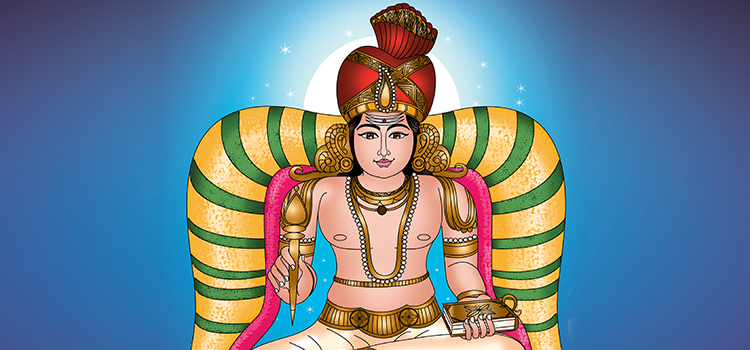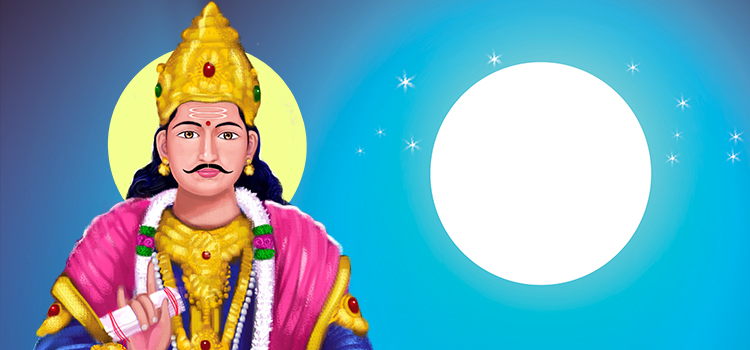The festival of Chitra Pournami falls on the full moon day in the month of Chithirai, or Chaitra. The Hindu deity Chitragupta, the official assistant of Yama, the Hindu God of the underworld, who records the good and bad deeds, is revered on this day. The festival falls on Thursday, 7 May 2020. On this day, people ask forgiveness of Chitragupta for their sins. They bathe in rivers and other water bodies to wash away their sins, like the river Chaitra in Tirunelveli, Tamil Nadu. In Thiruvananthapuram, Kerala, people have been celebrating this festival for 200 years in an ancient Devi temple dedicated to Goddess Shakti or Bhagavathi.
Importance of Observing Chitra Pournami
Chitra Pournami falls on the auspicious first Tamil month of Chithirai. It is a day that reminds everyone that their good and bad deeds have consequences. When a person dies, the soul goes to Yama. Chitragupta tallies the deeds, good and negative, and reports to Yama, who gives the final verdict. Chitra Pournami offers every individual an opportunity to cleanse their souls of sin through genuine repentance and prayers. This day helps reduce the impact of their evil deeds and relieves them of their sins.
Celestial and Astrological Importance of Chitra Pournami
Chitra Pournami occurs in the Tamil month that corresponds to the months of April-May of the English calendar. The Full Moon occurs on this day with the mighty sun lying in Aries sign. The powerful sun marks the beginning of the solar calendar and brings soothing effects. This day is called Chitra Pournami. The Full Moon aligns with the Tamil star ‘Chithirai’, the most brilliant in the Libra constellation.
The movements of the celestial planets like the Sun and the Moon closely link with traditional practices, rituals, customs, festivals, and other celebrations in Hinduism. The moon is said to be the ruler of minds. Human minds experience vibrations on account of the waxing/ waning of the moon. On a Full Moon day, the sky is radiant with the splendor of the moon. The month of Chaitra falls in summer when the sun is in full brilliance. The moon receiving his light from the sun glows at his maximum on Chitra Pournami. The sky is clear; clouds do not hinder the visibility of the moon.
Legend of Chitra Pournami
Legend has it that Indra, the king of Gods, became egoistic and committed a sin by disrespecting his Guru Brihaspati. Thus, he acquired negative karma, but later, he realized his mistakes. He implored his Guru, Brihaspati, for guidance, as he had also committed numerous sins in the absence of his Guru. Brihaspati advised Indra to atone for his sins by going on a pilgrimage. Indra followed the instructions of his Guru. He found a Shiva Lingam under a Kadamba tree. He started worshipping Shiva by offering a golden lotus from a pond nearby. Thus, he was relieved of his sins on Chitra Pournami.

Story of Chitragupta
The name Chitra means portrait; Gupta denotes hidden. Chitragupta was born to Goddess Parvati in the form of a painting. Later, he entered the womb of Goumata Kamadhenu (divine bovine Goddess) and was born on the day of Chitra Pournami. Hence, he is named Chitragupta. He is the assistant of Yama and keeps accounts of the good and bad activities of people, which he refers to Yama, for final judgment.
The name Chitragupta indicates that he plays a vital role in the life of every individual. He is vigilant about human activities; his hidden presence cautions people not to commit undesirable deeds, especially on an auspicious day. He subconsciously motivates people to gravitate towards good thoughts and creates goodwill in their minds. They aim to be benevolent, hoping it will bring them fulfillment.
Traditions and Rituals for Chitra Pournami
People take a dip in holy rivers and water bodies to cleanse themselves of sins. They offer pooja and rituals, after which they donate rice, vegetables, dal, and gifts placed on a bamboo sieve. Women draw a kolam (rice flour drawing) at the entrance of their houses but leave the side facing South empty. After performing the pooja, they wipe out the kolam immediately.
According to tradition, people offer sweet Pongal and other delicacies without salt. Devotees abstain from taking any milk or dairy products as Chitragupta was born to Gaumata Kamadhenu. The Chitra Pournami Vratham starts at sunrise. Once the moon is sighted, it ends. Devotees wake up early, bathe, and offer prayers. They sight the moon, offer prayers, and break the fast. They partake of fruits, milk, water.
Significance of Chitra Pournami
People worship the Goddess Ambal on Chitra Pournami. This festival holds great importance for Meenakshi Amman and Kallazhagar. Worshipping Gods on Chitra Pournami gives several benefits to devotees.
The Full Moon radiates positive and good vibrations that uplift the mood and thoughts of people, paving the way for enhanced creativity and good temperament. There is a flow of positive energy that radiates from the Full Moon. People’s mental energy levels touch a ‘high’ on this day. The festival of Chitra Pournami radiates positive energy amongst people and erases negative karma or sins from their past. They perform good deeds through donations and charity, and it helps them attain a happy and prosperous life.
Places of Worship
There are several shrines dedicated to Chitragupta, where people offer special poojas. People celebrate this day in different ways and worship their favorite deity at home or visit a temple. The Sri Mangaladevi Kannagi Temple near the Tamil Nadu-Kerala border stays open only on this day. The Madurai Meenakshi Amman Temple in Madurai, the Sri Balasubramanyar Temple in Port Klang, Malaysia, the Sri Thendayuthapani Temple in Teluk Intan, Malaysia, and the Chitragupta Temple in Kanchipuram, among others, see a massive gathering of devotees on Chitra Pournami day.


